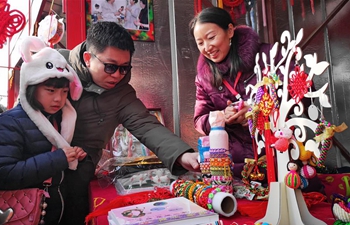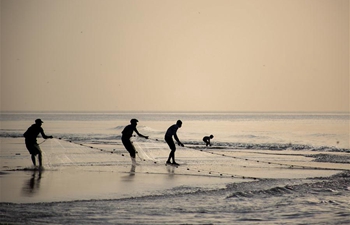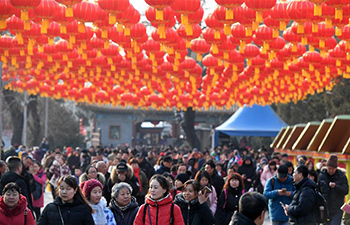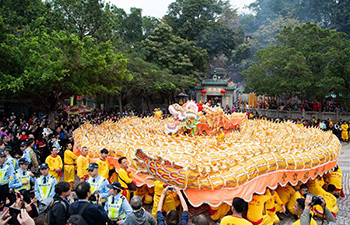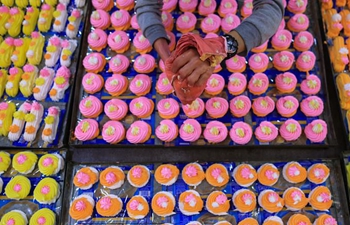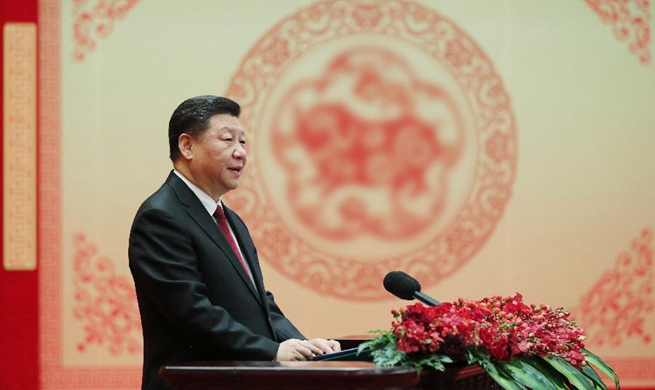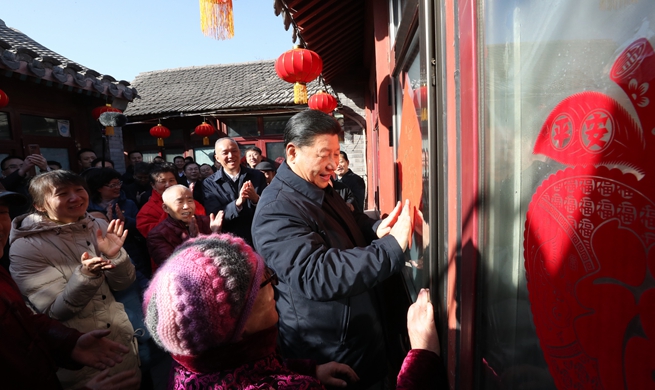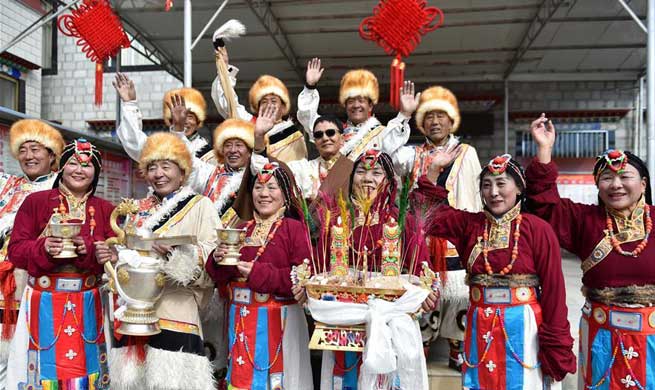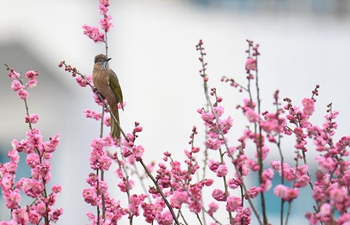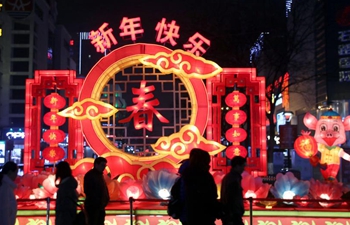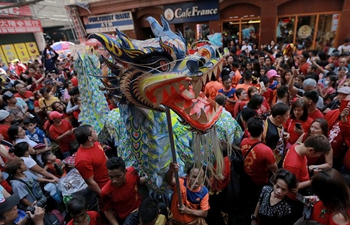BEIJING, Feb. 6 (Xinhua) -- Who's the most famous bunny in the world? The answer is Bugs Bunny or Peter Rabbit for many, but for most Beijingers none can compete with Lord Rabbit.
With a human body and a rabbit's ears and mouth, Lord Rabbit, known as Tu'er Ye in Chinese, is not only a local handicraft symbolizing happiness and good luck, but also a favored clay toy for children on traditional festivals.
Shuang Yan, a 61-year-old Lord Rabbit craftsman, barely had time to stop for a glass of water as his orders soared during the Spring Festival, the peak season of the year.
"What concerns me most is that the image of rabbit figurines in the market has lost its traditional features," Shuang said.
The rabbit is believed to be a deity on the moon in charge of health and medicine. A legend goes that Beijing once suffered a plague before the Mid-Autumn Festival. The Chinese goddess of the Moon Chang'e dispatched the rabbit to cure the disease.
"The rabbit is actually a female," Shuang explained. "She borrowed helmet and armour from a deity in a temple and dressed like a man for the convenience of treating patients in the then feudal society."
He emphasized that in the iconic image, Lord Rabbit usually wears a golden helmet and armour and holds a pestle, a tool for pounding medicine.
"However, many craftsmen changed the image to woo younger fans, causing misunderstandings of the story and folk customs behind it," Shuang said.
He refuses to further innovate the Lord Rabbit design. But he does craft the clay figurines with new materials such as resin to make them lighter or create detachable ears.
The Lord Rabbit craft went through a hiatus during the Cultural Revolution between 1966 and 1976 but re-emerged in the early 1980s.
Shuang learned making the rabbit figurine from his father at the age of seven. He described his childhood as "sitting mute and making rabbit clay toys for 12 hours a day."
"My father never smiled to me. He hoped I would surpass him and was not satisfied with my artwork," he said.
Unable to endure the loneliness and poverty, he migrated to the southern Chinese city of Shenzhen, where he sold electric products and earned 5,000 yuan (around 741 U.S. dollars) a month in 1990, over 10 times his Beijing salary.
Two years later, however, his father asked him to go home. "He said if I gave up, the Lord Rabbit might disappear in Beijing," Shuang said.
Despite the reproach, sweat and tears he had suffered, he thought for a while and returned, knowing where the decision would lead him.
Lord Rabbit making is one of Beijing's over 12,000 items of intangible cultural heritage. It was inscribed on the national list in 2014.
Shuang is struggling to make ends meet with a national subsidy of 20,000 yuan each year, plus monthly sales of 10,000 yuan.
Failing to afford a house in the downtown areas, he rents a workshop in Changping District. Each year, his workshop produces around 2,000 rabbit figurines, purchased by friends or tourists at temple fairs during the Mid-Autumn Festival and Spring Festival.
"The Lord Rabbit sculptor is a low-paid and boring job. It's hard to make young people stay," Shuang said. Only four people help him -- his son, nephew and two apprentices.
However, Shuang sees hopes to revive the traditional craft after Beijing's legislature approved its first regulation on intangible cultural heritage.
According to the regulation, which will be implemented on June 1, relevant government departments should provide subsidies and necessary venues or platforms for intangible cultural heritage teaching and display campaigns or activities.
"If I can rent a workshop in the downtown areas, it would be more convenient to promote my rabbits," he said.
Several schools in Beijing have launched intangible cultural heritage programs, inviting craftsmen and performers into classrooms, presenting their art and skills to inspire the younger generation's interest in tradition.
Shuang has taught thousands of primary school students how to make the clay rabbits. But it is just not enough to revive this fading art.
"I don't think urban parents would like their children to take Lord Rabbit craft as a full-time job. They treat it more like a hobby," he said. "What I want is someone who can learn all the skills associated with the craft from childhood and carry on this traditional craftsmanship."




